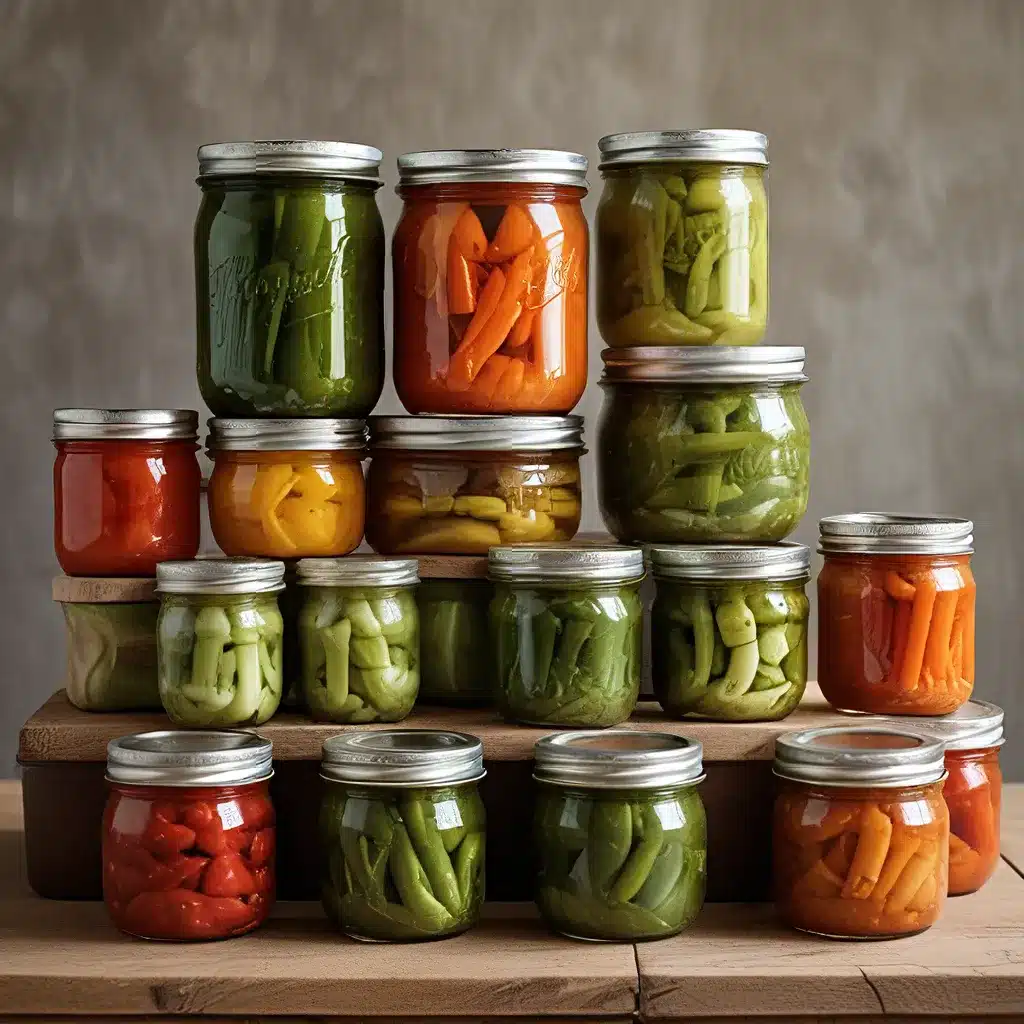
As the summer temperatures soar and the garden overflows with bounty, my kitchen transforms into a canning command center. The familiar ping of sealing jars echoes through the room as I carefully preserve the season’s harvest, ensuring I can enjoy the flavors of summer all year round.
The Joys and Challenges of Canning
I’ll admit, canning is a time-consuming process with a lot of must-follow rules and specialized tools. But for me, the effort is well worth it. There’s something incredibly satisfying about seeing those rows of jewel-toned jars lining my shelves, brimming with homegrown goodness. And let’s not forget the delicious payoff of being able to crack open a jar of my own homemade sauce, salsa, or pickles in the middle of winter.
Of course, canning isn’t all sunshine and rainbows. It can be a bit of a logistical challenge, especially when I’m trying to maximize my time and effort. That’s why I’ve learned to approach canning in strategic batches, rather than tackling it one jar at a time. I’ll often stash away produce in the fridge or freezer until I have a sizable stash to can all at once. This helps break up the process and makes it feel less like a daunting project.
What Can You Can?
One of the best things about canning is the sheer variety of foods you can preserve. From classic sauces and jams to creative pickles and chutneys, the options are truly endless. Here are just a few of the star players in my canning lineup:
| Category | Examples |
|---|---|
| Jams and Spreads | Apples, apricots, berries, cherries, eggplant, pears, peppers, raspberries, rhubarb |
| Chutneys and Relishes | Cucumbers, green tomatoes, onions, plums, zucchini |
| Salsas | Cherries, tomatillos, tomatoes |
| Pickles | Cucumbers, green tomatoes, snap beans |
The key is to focus on high-acid foods like fruits and tomatoes, which can be safely canned using a simple water bath. For low-acid foods, you’ll need to add enough acid, usually in the form of vinegar, to make them shelf-stable. Pressure canning is also an option for these items, but water bath canning is the easier and more accessible method for most home canners.
Canning 101: Mastering the Basics
Of course, before you dive headfirst into your canning adventures, there are a few essential skills and tools to master. First and foremost, you’ll need to familiarize yourself with the core canning techniques, including proper jar sterilization, headspace management, and the all-important water bath or pressure canning process.
A good canning guide can be an invaluable resource, walking you through the step-by-step process and helping you avoid any potential pitfalls. And don’t forget the specialized equipment, like a large pot for water bath canning, a pressure canner, and a magnetic lid lifter. These tools may seem like an investment, but they’ll make your canning journey smooth and successful.
Canning for Year-Round Delight
One of the true joys of canning is being able to enjoy the flavors of summer all year round. Whether it’s cracking open a jar of homemade tomato sauce to toss with fresh pasta or savoring the sweet-tart bite of a homemade fruit preserve, those preserved flavors bring a little bit of sunshine to even the gloomiest winter day.
And let’s not forget the practical benefits of canning. By preserving the harvest, I’m able to reduce food waste and maximize my investment in the garden. Plus, I can stock up on pantry staples like jams, pickles, and salsas, making meal planning a breeze.
Pickling: A Tangy Twist on Preservation
But canning isn’t the only way to preserve the harvest – pickling can be a delightful alternative. While canning requires a more involved process, pickling is often quicker and easier, with the added bonus of a tangy, flavorful twist.
Giardiniera, for example, is a classic Italian pickle that transforms a medley of veggies into a crisp, zesty condiment. And don’t forget about the versatility of pickled onions, which can brighten up everything from salads to tacos.
Embracing the Uncertainty of DIY Preservation
While canning and pickling may seem daunting at first, I’ve found that the rewards far outweigh the challenges. There’s a certain thrill in mastering these time-honored preservation techniques and experimenting with new flavor combinations.
Of course, not every batch will be perfect, and sometimes things don’t quite go as planned. But that’s all part of the joy of DIY preservation. I’ve learned to embrace the uncertainty and see each experiment as an opportunity to learn and grow as a home food preserver.
Preserving the Future
As I look to the future, I’m excited to continue exploring the world of canning and pickling. There’s always more to discover, from creative new recipes to innovative preservation methods. And who knows what culinary adventures await as I continue to push the boundaries of what’s possible in my own kitchen.
So, if you’re feeling inspired to preserve the harvest and savor summer’s bounty all year round, I encourage you to dive in and give canning and pickling a try. It may take a bit of time and effort, but the delicious rewards are more than worth it. Happy preserving!

